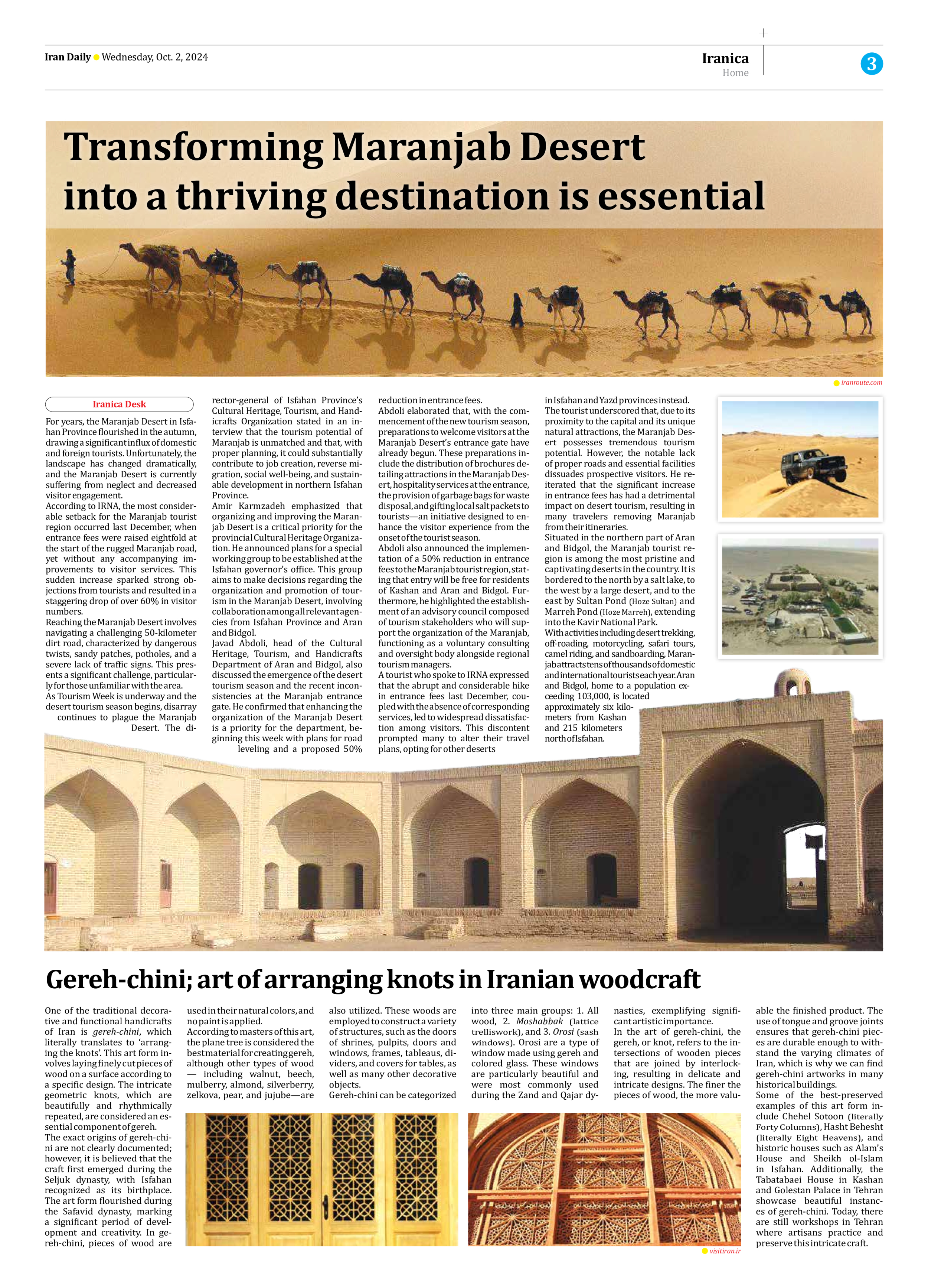
Gereh-chini; art of arranging knots in Iranian woodcraft
One of the traditional decorative and functional handicrafts of Iran is gereh-chini, which literally translates to ‘arranging the knots’. This art form involves laying finely cut pieces of wood on a surface according to a specific design. The intricate geometric knots, which are beautifully and rhythmically repeated, are considered an essential component of gereh.
The exact origins of gereh-chini are not clearly documented; however, it is believed that the craft first emerged during the Seljuk dynasty, with Isfahan recognized as its birthplace. The art form flourished during the Safavid dynasty, marking a significant period of development and creativity. In gereh-chini, pieces of wood are used in their natural colors, and no paint is applied.
According to masters of this art, the plane tree is considered the best material for creating gereh, although other types of wood — including walnut, beech, mulberry, almond, silverberry, zelkova, pear, and jujube—are also utilized. These woods are employed to construct a variety of structures, such as the doors of shrines, pulpits, doors and windows, frames, tableaus, dividers, and covers for tables, as well as many other decorative objects.
Gereh-chini can be categorized into three main groups: 1. All wood, 2. Moshabbak (lattice trelliswork), and 3. Orosi (sash windows). Orosi are a type of window made using gereh and colored glass. These windows are particularly beautiful and were most commonly used during the Zand and Qajar dynasties, exemplifying significant artistic importance.
In the art of gereh-chini, the gereh, or knot, refers to the intersections of wooden pieces that are joined by interlocking, resulting in delicate and intricate designs. The finer the pieces of wood, the more valuable the finished product. The use of tongue and groove joints ensures that gereh-chini pieces are durable enough to withstand the varying climates of Iran, which is why we can find gereh-chini artworks in many historical buildings.
Some of the best-preserved examples of this art form include Chehel Sotoon (literally Forty Columns), Hasht Behesht (literally Eight Heavens), and historic houses such as Alam’s House and Sheikh ol-Islam in Isfahan. Additionally, the Tabatabaei House in Kashan and Golestan Palace in Tehran showcase beautiful instances of gereh-chini. Today, there are still workshops in Tehran where artisans practice and preserve this intricate craft.







